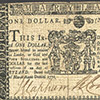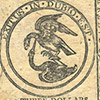|
- Verena Calas, National Park Service Museum Educator, Washington D.C
- 6-8 grades
- 5
[Back to top]
|
- This lesson unit plan draws on the extraordinary Valley Forge National Historic Park. Museum collections featured in the virtual museum exhibit at www.nps.gov/museum.
- Students will explore the challenges experienced by the Continental Army and its leadership, including General Washington, during their encampment at Valley Forge during the winter of 1777-1778 through object-based learning, hands-on activities, and active research. Students will work with and analyze primary source materials; including original Washington correspondence and other related documentation. Students will have the opportunity to make connections between the Revolutionary War period and the present by examining the similarities and differences between the original training manual of General Von Steuben and modern military manuals. Students will also practice analytical research, close reading, and debate skills through the examination of symbolism in colonial currency, the analysis of 18th century portraiture, and the discussion of women's role in the military.
- : During the American Revolution, General Washington and the fledgling Continental Army encountered many obstacles. However, from the Valley Forge encampment they emerge an organized and trained fighting force. Therefore, what obstacles did soldiers encounter while at Valley Forge? And, what factors contributed its emergence as a trained professional fighting force?
The following lesson plans are organized individually but make up a cohesive unit plan for "The Winter at Valley Forge". Teachers can choose to teach all five lessons as a unit, or each individually.
- This lesson introduces students to the challenges experienced by every day soldiers and their commanding officers during the winter at Valley Forge and explores how they dealt with these challenges not only physically, but mentally, as well.
- This lesson introduces students to the primary source documentation and analysis through the correspondence of men living in the Valley Forge encampment. Students will get another look into the challenges the camp presents as well as the emotional toll war can on the soldiers fighting it.
- This lesson explores the military training and tactics introduced by General Von Steuben at Valley Forge. Students will explore the importance of military manuals as modes of sharing information amongst large organized groups.
- This lesson explores the various rolls of women at the Valley Forge encampment. Students will compare the experiences of Valley Forge women to the changing rolls of American women in the military throughout history and partake in a class debate.
- This lesson explores the different kinds of currency and symbolism used not only in the Valley Forge Camp, but in the Thirteen Colonies at large. Students will also engage in the mathematical exchange of money.
[Back to top]
|
| This lesson introduces students to the challenges experienced by every day soldiers and their commanding officers during the winter at Valley Forge and explores how they dealt with these challenges not only physically, but mentally, as well. |
| MUSEUM OBJECT [photos of objects in the Parks museum collections] |
SIMILAR OBJECTS [local items similar to museum objects] & OTHER MATERIALS |
Length of time |
|
|
55 minutes |
|
- Images of Colonial and Continental Money
- U.S. and foreign currency in multiple denominations
- Cardstock paper
- Pens and pencils
- Markers of assorted colors
- Crayons/colored pencils of assorted colors
- Glue
- Construction paper of assorted colors
- Copies of New York Times Article Harriet Tubman Ousts Andrew Jackson in Change for a $20
- Redesign of the Dollar Bill Instruction Sheet
|
45
minutes |
|
|
55 minutes |
[Back to top]
|
Understands the impact of the American Revolution on politics, economy, and society
Integrate visual information (e.g., in charts, graphs, photographs, videos, or maps) with other information in print and digital texts.
VA:Cr2.3.8a
Select, organize, and design images and words to make visually clear and compelling presentations.
[Back to top] |
- SWBAT analyze the symbols and language used in colonial, continental, and modern currency and their changes over time.
- SWBAT use mathematical conversion factors to perform conversions in with 18th century money
- SWBAT to analyze visual symbolism in primary sources.
- SWBAT to apply math skills to primary sources.
[Back to top]
|
Colonial Currency PowerPoint
[Back to top]
|
Currency: something (as coins, treasury notes, and banknotes) that is in circulation as a medium of exchange; a common article for trade or bartering.
Barter: to trade goods or services in exchange for other goods or services.
Wampum: beads of polished shells strung in strands, belts, or sashes and used by North American Indians as money.
Commodity Money (“Country Pay”): money whose value comes from the commodity they are made from such as gold, silver, copper, salt, and tea.
Bills of Credit: a note designating a promise to pay in the future.
Counterfeit: made in imitation of something else with the intent to fool or deceive.
|
|
-
Reduce the number of currency used in activities to allow for time constraints.
- Allow students to work in groups for currency redesign instead of individually, depending on class size.
[Back to top] |
[Back to top]
|
|
Other Materials Listed in Sections C
|
|
|
|



